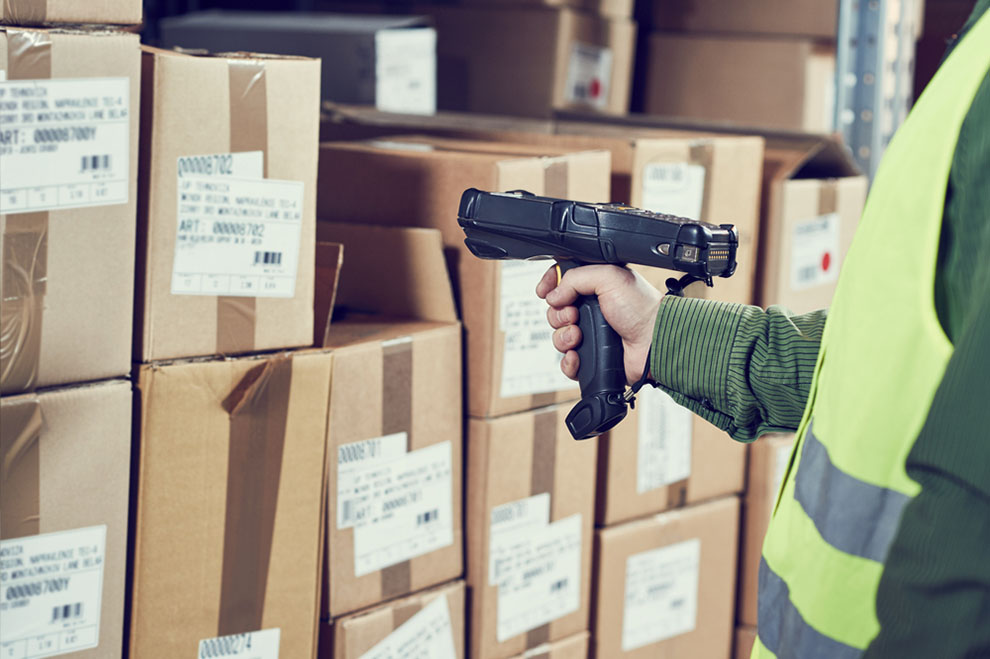Source: panuwat phimpha/Shutterstock.com
The best warehouses use software programs to collect data on their operations so they can track individual products, orders and shipments in real-time. If you’re in the market for a new warehouse management system (WMS), there are several key factors to keep in mind.
With the right system in place, you can increase efficiency and reduce costs without decreasing revenue. Before you start shopping around, study the performance improvement of inventory management system processes by an automated warehouse management system to get a better idea of what you can expect to gain from this technology.
Our Stackable Plastic Totes for Sale Keep Your Warehouse Organized
Use these tips to find the right WMS for your facility.
Cost
If you’re working on a limited budget, consider using free or low-cost inventory management software. Some programs are free for small- and medium-sized facilities. Once you reach a certain SKU or order threshold, you’ll have to pay a monthly fee. Shop around to see if you can get away with using free software if you don’t need a lot of fancy features. Basic programs will track the location of your inventory so you can still organize your facility without increasing your overhead.
When paying for a WMS, set a clear budget so you can reach ROI.
Interoperability
Warehouse Storage Bins Help with Organization, too
One of the most important aspects of choosing a WMS is its ability to work with related programs, such as your eCommerce website, customer and client interface, shipping information and manufacturing software. Ideally, the program will help you visualize every stage of the supply chain so you always have access to the right information.
The program should be easy-to-use with a clear user interface. By combining several programs into one, you won’t have to switch windows when comparing information or checking on the status of an order.
Source: ESB Professional/Shutterstock.com
Data Collection
Your WMS will be useless without access to the right data. Consider how you will enter information into the system. For complete automation, use the Internet of Things (IoT), such as smart scanners and sensors, to automatically scan packages and products as they move through the supply chain.
Individual workers can also scan packages and products by hand before sending them on to the next phase of the journey. The WMS should automatically update this data every few seconds to avoid confusion and unnecessary delays. Entering information should only take a few seconds or less. If employees have to enter information by hand, it’s time to find a new WMS.
Consider how you will label your packages in order for them to get logged in the system accurately. It’s best to utilize reusable storage and shipping containers so you don’t have to print off a new label every time it goes out for delivery. Look for stackable plastic totes for sale to fill your warehouse with high-quality containers.
Reporting and Research
Having a WMS is all about storing and organizing information. Make sure you can always find the information you need when you need it most. You should be able to look up the exact order or SKU number in a matter of seconds so you can relay these details to your business partner ASAP. We all know time is of the essence when it comes to tracking down missing products and orders.
The program should also automatically generate reports on a regular basis. This makes it easy to coordinate with your business partners and customers. You should be able to send these documents off with the click of a button for seamless reporting.
Source: Dmitry Kalinovsky/Shutterstock.com
Manual Backups
It’s important to remember this technology isn’t foolproof. While a good WMS can increase efficiency and improve order accuracy, some mistakes are bound to be made–especially if you fail to monitor the numbers in the system. Have your workers physically inspect your inventory to make sure the system is correct. If they encounter any discrepancies, find out what caused the error to prevent it from happening again in the future. Use warehouse storage bins to keep your products organized so you don’t lose track of how many items you have on the shelf at any given time.
If the WMS gets off track, it could take you days to sort everything out as your employees manually update the information in the system. Focus on improving warehouse organization to make sure your packages are accessible and easy to find.
The WMS should make your job easier. Look for features that help you overcome specific challenges in the workplace.



